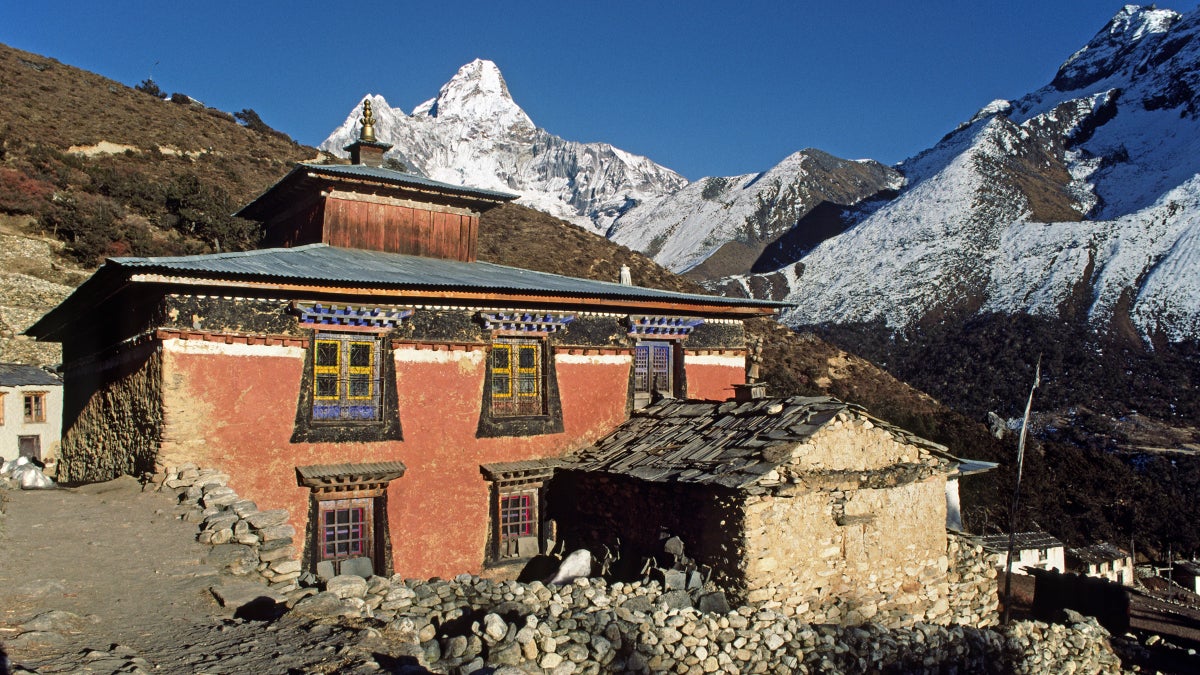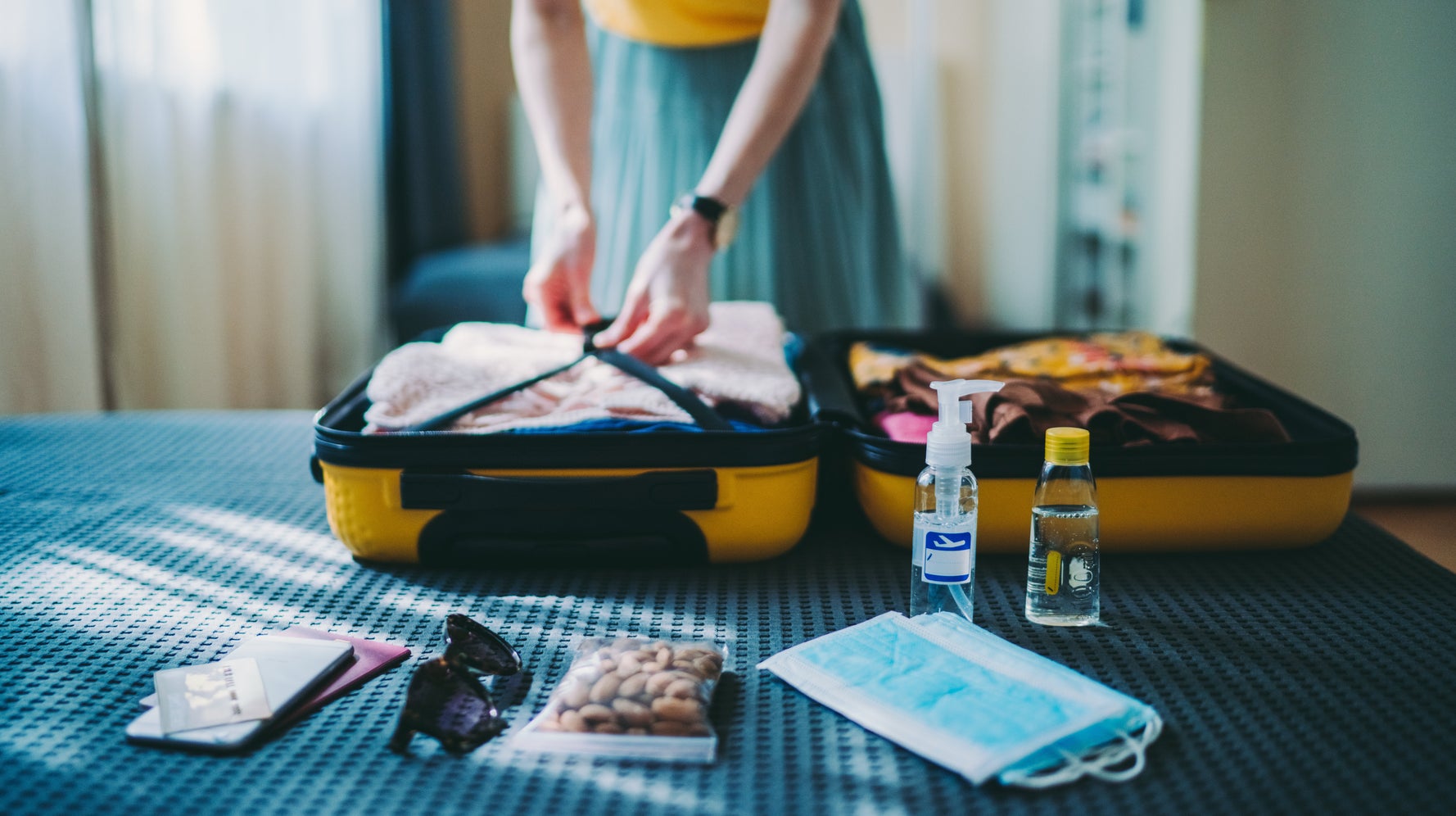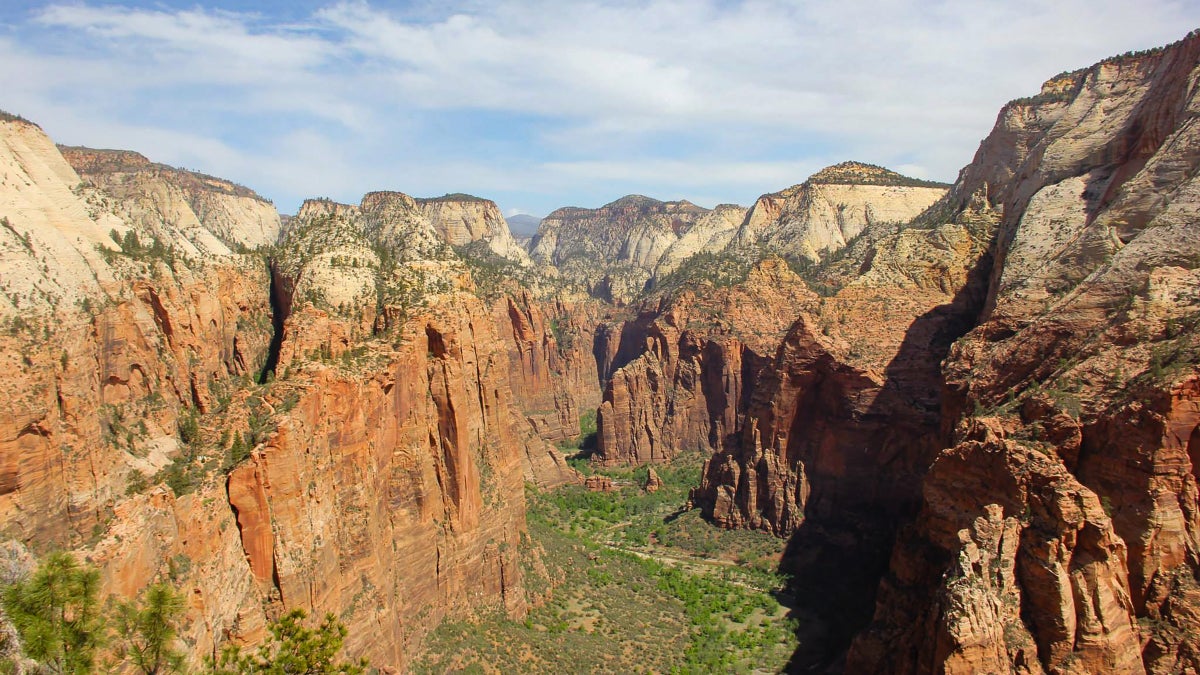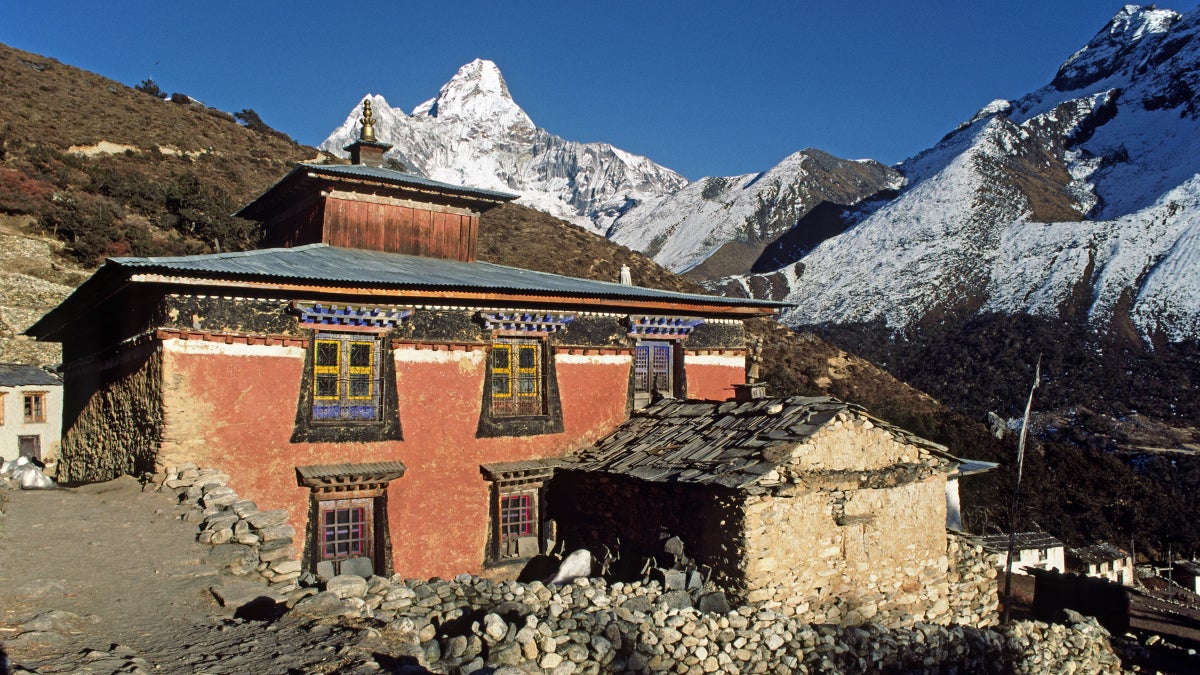
When you walk into the Sherpa village of Pangboche, which is about ten miles from Mount Everest Base Camp, it feels like you’re stepping back in time.
The town sits on a hillside at 12,000 feet above sea level, just off the trail to Everest and 22,349-foot Ama Dablam. With its stone homes and meandering yaks, Pangboche is a throwback to an earlier era in the Everest region’s history—you know, before all of the tourists and trekkers showed up.
The town is built around a 600-year-old monastery, the oldest in the Khumbu Valley. The two-story Pangboche Monastery is where Mount Everest climbers stop to receive a blessing before they venture onto the peak.
I visited the Pangboche Monastery earlier this week. When I stepped into the courtyard, I heard the baritone thumping of a ritual drum for the morning prayers. I walked up a steep set of stairs and through a heavy wool curtain and heard the drumming stop. A young man wearing a heavy down jacket and fluffy down pants over his traditional shawl and Sherpa robe greeted me.
Pemba Nurbu Sherpa, the monastery’s 30-year-old caretaker, took a key adorned with a skeleton design from his pocket and opened the doors. We walked into the monastery’s dimly lit inner sanctum, where Pemba Nurbu lay prostrate in front of three four-foot tall statues, one of which was of Guru Rinpoche, a revered figure in Himalayan Buddhism. On the walls, I saw paintings of wrathful gods and enlightened beings dancing across cracks in the facade.
Pemba Nurbu then opened a small box and showed me a pointed skull and the skeleton of a human-like hand behind a pane of glass. He told me these relics were from a yeti—alas, they are replicas, and the original bones were stolen in the early nineties after the television show Unsolved Mysteries aired a segment on them. These replicas were built by the special effects staff of the Lord of the Rings movies at the behest of a Kiwi pilot named Mike Allsop.
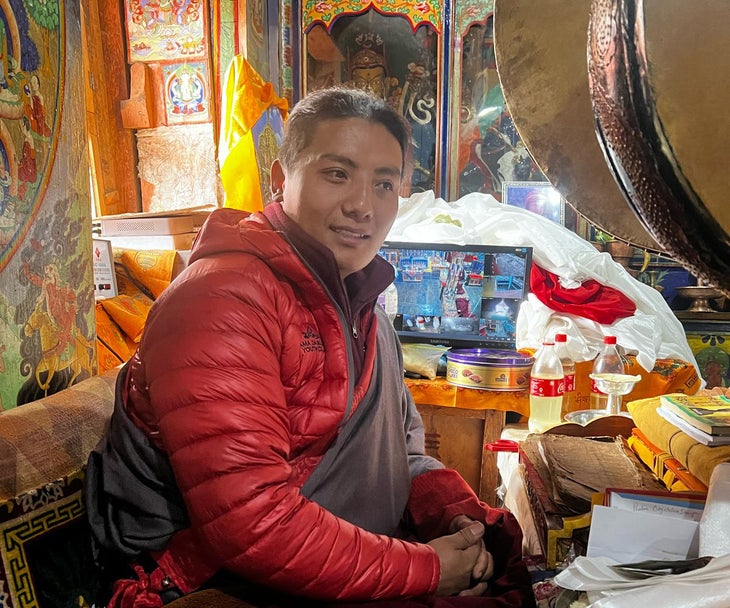
As a child, Pemba Nurbu studied to be a monk, but as a young adult he had left the monastic world to provide for his family. In the Khumbu Valley, this means working for expeditions to Mount Everest and other peaks. Pemba Nurbu became a climbing Sherpa on Everest expeditions, and he reached the roof of the world on five separate occasions.
But he also endured a handful of close calls on the mountain. Pemba Nurbu told me that he narrowly avoided dying in the 2014 avalanche that killed 16 mountain workers in the Khumbu Icefall, including several Pangboche locals.
Pemba Nurbu is not a full-time monk; his sect of Tibetan Buddhism encourages layperson monks like him to maintain a job and have a family, while still performing many of the daily ritual religious duties. He told me he’s not climbing right now because it’s his turn to look after the monastery for a two-year shift.
I told Pemba Nurbu that I, too, had come for a blessing for my trip to Mount Everest Base Camp. He led me up a thin stairway into an open hall with bookcases and clay statues. The ceiling opened into an elevated chamber that was ringed by wooden masks. “These masks are as old as the monastery,” he told me. “They were made from the wood of a single tree.”
In the corner of the room stood a few dozen bottles of what looked like soured milk. Some were in reused Sprite or Nalgene bottles, each with a small dollop of butter on the lid. “Each of these was brought by a Sherpa climber as an offering to the mountains before they climbed,” he said. “It’s the most pure chhaang.” The drink is the traditional Nepali alcoholic beverage.
We sat on a long bench, and Pemba Nurbu showed me a weathered stack of brown paper with handwritten script. The paper looked like a pirate’s map from a movie.“These are the main books for our morning prayers,” he said. “Look how old they are. Think about how many generations of lamas have used these.”
Next to him, two large circular drums hung from the ceiling. Before Pema Nurbu started the prayer, he glanced over at a screen showing a matrix of cctv cameras watching every corner of the monastery.
I wrapped ten dollars worth of Nepal Rupees in a ceremonial silk scarf—my offering. Pemba Nuru recited a string of chants from memory as he tied a small plastic-covered amulet onto a red string. The amulet, he explained, contained specific mantras for the mountain gods. He then showed me another tight knot in the string which captured all of the blessings accumulated from the year of ceremonies. As I bowed, he fastened the amulet around my neck and returned the silk scarf, still chanting quiet mantras. The ceremony was completed—I was ready for Mount Everest.
Technically, all of the mountains in the Khumbu region are sacred to the Sherpa community. Each is a manifestation of a different god or goddesses that protects and blesses the valley and, in turn, the world. Because of this, climbing is forbidden on a few peaks, such as the towering stone spire of 18,901-foot Khumbila, which towers over the villages of Khumjung and Namche Bazaar. Most of the other mountains, including Mount Everest, are fair game.
The Sherpas call Mount Everest Chomolungma, which means “Goddess Mother of the World.” According to their culture, Chomolungma is home to a generous but wrathful goddess named Miyo Lang Zangma. She is one of five sisters that inhabit mountains along the Nepal-Tibet border. Miyo Lang Zangma is a generous benefactor, but she is easily upset by bad smells such as burning garbage or cooking meat.
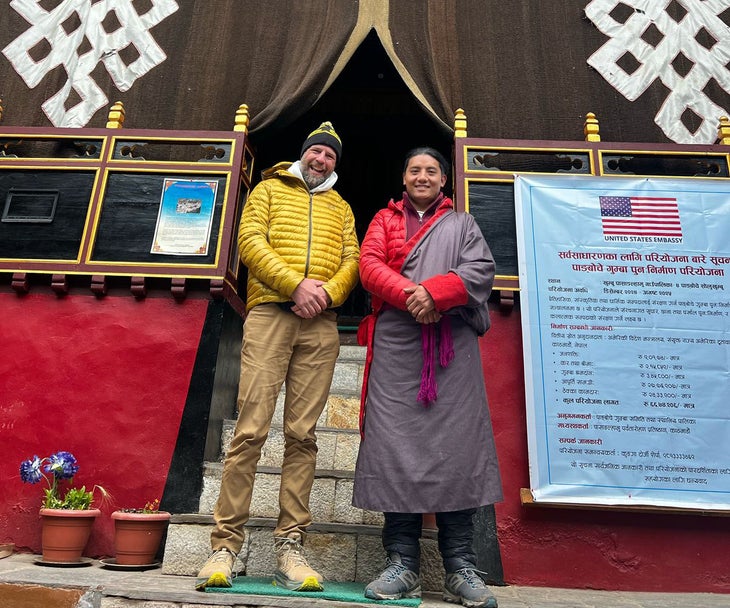
Pemba Nurbu explained that when climbers come to Pangboche for a blessing, they are asking for forgiveness and safe passage on the peaks without incurring the goddesses’ wrath. Alas, the modern demands of a Mount Everest expedition make it difficult to adhere to the sacred rules, he said.
“We used to go climbing and burn incense as an offering. We wouldn’t eat meat and we would say our prayers every day,” Pemba Nurbu said. “Many people climb Everest to be closer to God. But now they are also cooking meat and leaving garbage on that God.”
When Miyo Lang Zangma gets angry, people die, Pemba Nurbu said. “There are avalanches,” he told me. “The snow is melting and the mountains are turning black.” He explained that climbers are less interested in the spiritual truth of the mountain these days, and instead are seeking personal gain. “Now everyone just wants to earn a record. That’s just being greedy,” he added.
We spoke a bit more, and then it was time to go. We descended the staircase to the monastery entrance and snapped some photographs in front of the painted doors. As we wrapped arms, I could feel the amulet pressing against my chest. I thought about how, just that morning, I had stared at an Instagram post from a group of climbers at Base Camp—the photo showed them eating crispy chicken burgers and French fries. When I had seen the photos, I had looked forward to indulging in the meal, too. But after speaking with Pemba Nurbu, the appeal was gone.
Before returning to the trail, I asked Pemba Nurbu if he would return to Mount Everest after his two-year term in the monastery was completed.
“Of course,” he said, “How else am I going to eat?”
The post Mount Everest Climbers Visit the Pangboche Monastery to Pray for Safety appeared first on Outside Online.











